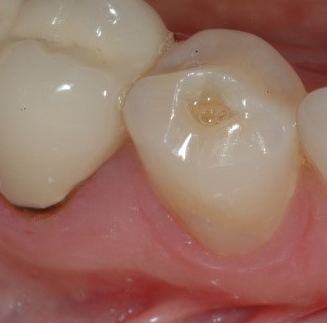What is tooth cupping? - Pictures, Symptoms, Causes, Repair
When tiny dents, or cups, form on the chewing surfaces of your teeth, it is known as tooth cupping, a type of dental erosion. Tooth cupping is a relatively uncommon type of deterioration, but it can be hazardous if the holes reach the dentin (a tooth's deep, hard tissue) and cause the enamel to collapse. Thus, the condition gets worse and the cups get deeper.
Teeth cupping is not the same as a cavity, despite being a type of erosion. However, tooth cupping occurs when plaque and bacteria erode enamel, just like in a cavity. Since enamel cannot be restored once it has eroded, tooth cupping must be prevented proactively and treated right away.
What is tooth cupping?
Tooth cupping is a dental condition marked by the formation of cup- or saucer-shaped depressions on the enamel surface of teeth. These concavities are primarily located on the molars and premolars and can differ in size and shape. Tooth cupping is frequently connected with dental erosion and, if left untreated, can result in a variety of dental disorders.

Symptoms
Tooth Sensitivity
People who have tooth cupping may be more sensitive to hot, cold, sweet, or acidic meals and beverages.
Visible Depressions
The most obvious sign of tooth cupping is the presence of depressions or concave pits on the damaged teeth.
Tooth Discoloration
Sometimes the discoloration of the impacted teeth occurs from staining inside the depressions.
Causes
Prevention and efficient therapy of tooth cupping depends on an understanding of its underlying causes:
Acidic Diet
A diet heavy in acidic foods and drinks can gradually erode tooth enamel, resulting in the development of depressions that resemble cups.
Oral Hygiene Issues
Poor oral hygiene practices can lead to the accumulation of plaque and tartar, which can hasten the deterioration of tooth enamel and cause cupping.
Medical Conditions
Tooth enamel erosion may occur as a result of exposure to stomach acids caused by certain medical diseases, such as eating disorders or gastroesophageal reflux disease (GERD).
Bruxism (Teeth Grinding)
Teeth grinding and clenching can erode enamel and make teeth more susceptible to cupping.
Genetic Factors
Some individuals may have a genetic predisposition for weaker enamel, making them more susceptible to tooth cupping.
Repairing
Tooth cupping is treated with a mix of dental procedures and preventative measures:
Enhanced Dental Hygiene
Extensive brushing and flossing as part of a stringent oral hygiene regimen can help stop more enamel degradation.
Fillings in Teeth
To repair the shape and function of teeth that have been damaged by tooth cupping, dentists can use dental fillings, such as amalgam or composite resin, to fill up the depressions.
Dental Adhesion
Dental bonding could be suggested in various circumstances in order to strengthen and restore the damaged teeth.
Fluoride Treatment
In order to lessen sensitivity and stop additional erosion, professional fluoride treatments can help remineralize compromised enamel.
Dietary Changes
Eating and drinking less acidic meals and beverages can help minimize enamel degradation and lower the chance of tooth cupping.
 Reviewed by Simon Albert
on
September 12, 2023
Rating:
Reviewed by Simon Albert
on
September 12, 2023
Rating:











